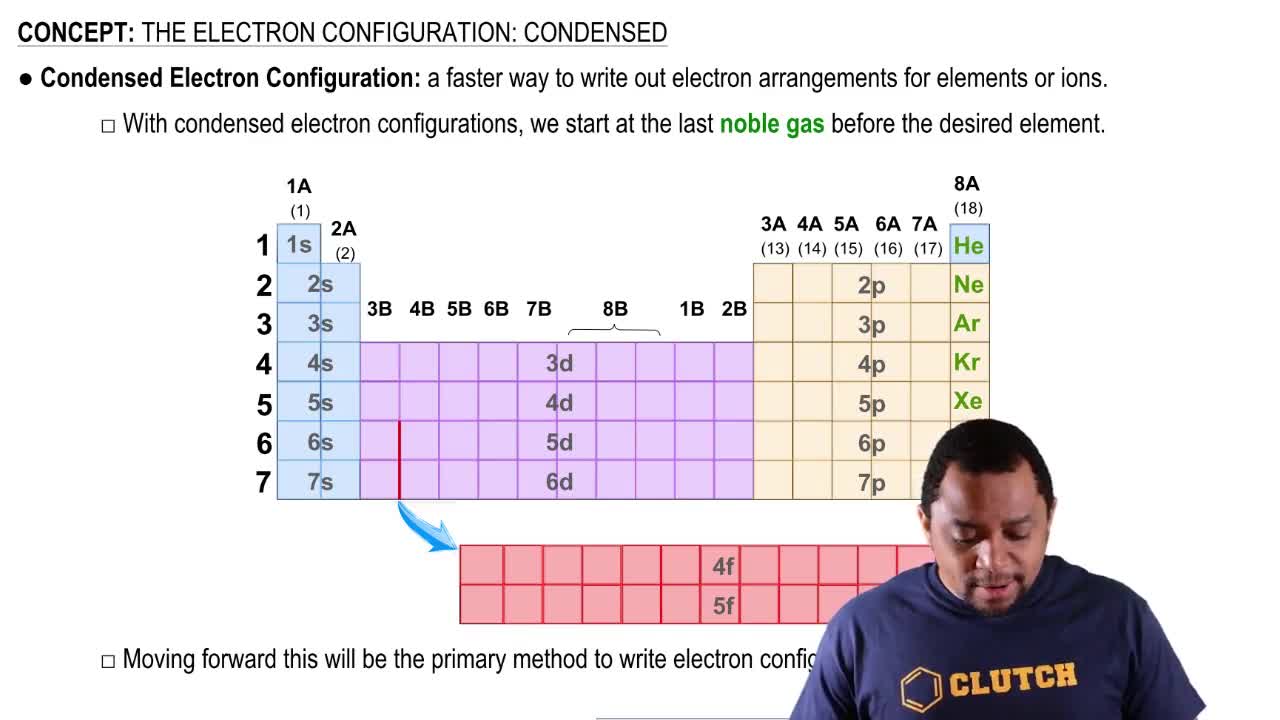Textbook Question
Write the electron configurations of Co, Co2+, and Co3+.
 Verified step by step guidance
Verified step by step guidance Verified video answer for a similar problem:
Verified video answer for a similar problem:



 2:59m
2:59mMaster Ions and the Octet Rule Concept 1 with a bite sized video explanation from Jules
Start learning